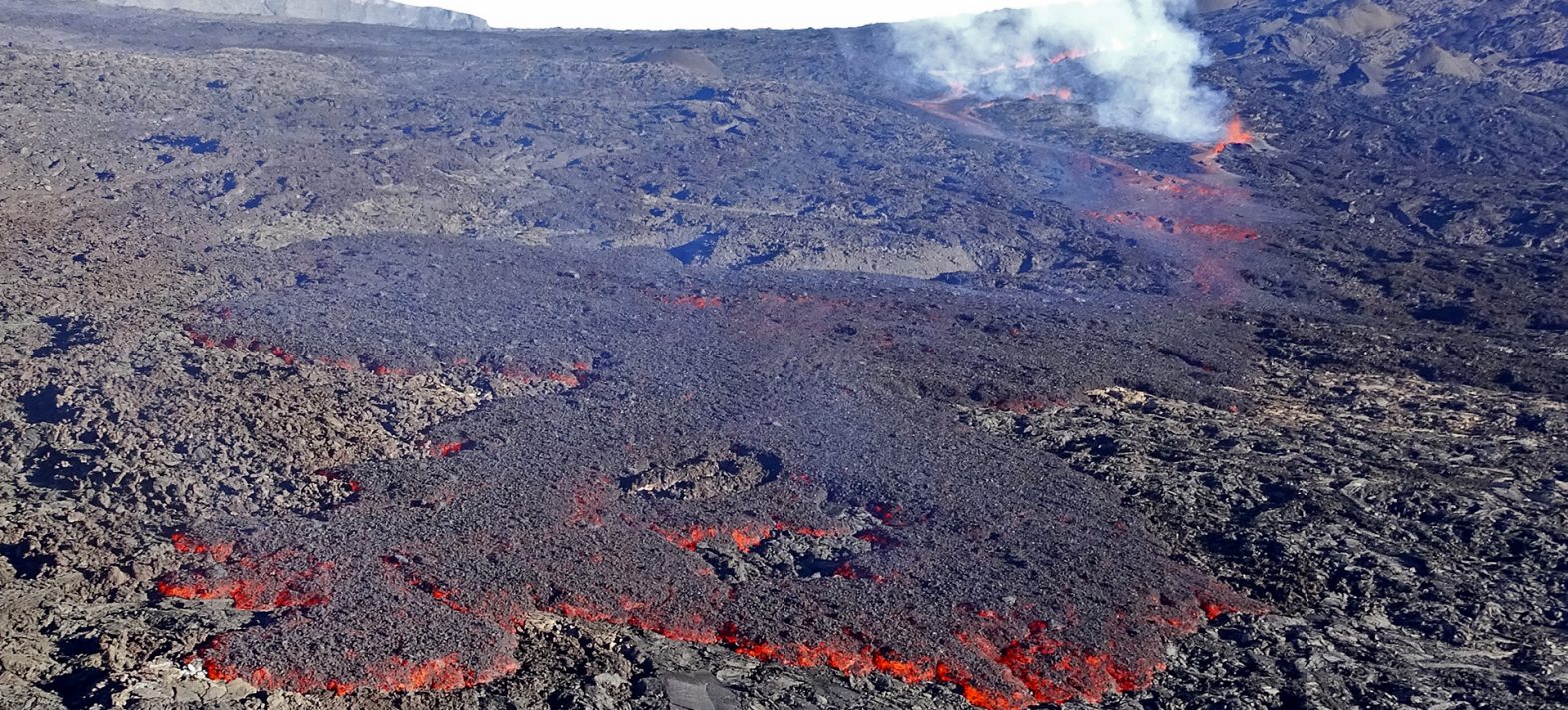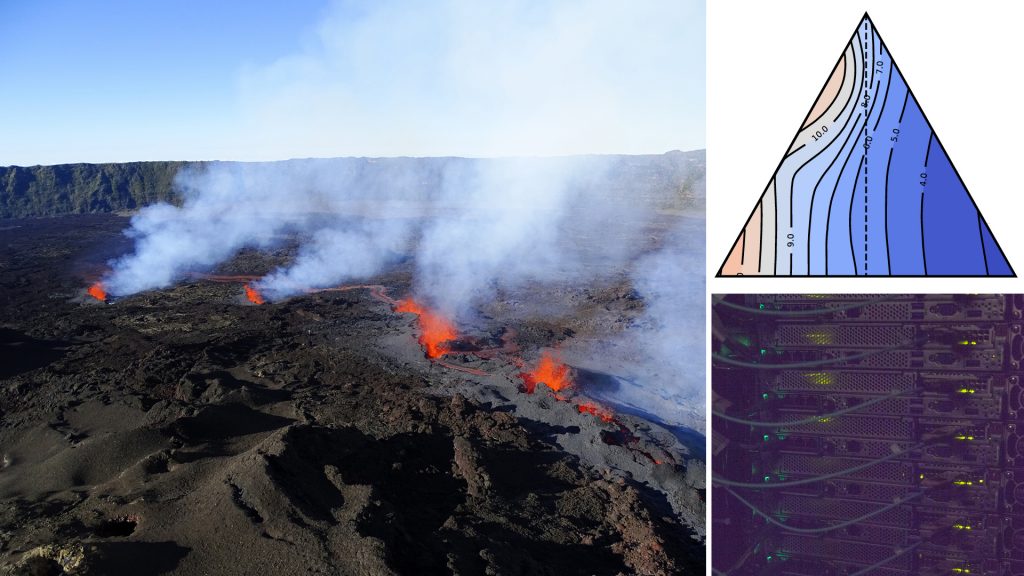These molten aluminosilicates make up the liquid part of magmas and lavas, which have played and continue to play a key role in the evolution of our planet. After the accretion of our young Earth, the dynamics of the primordial magma oceans influenced the initiation of plate tectonics and the formation of the first continents. Today, magmas continue to influence the history of our planet through the volcanic eruptions that shape the Earth’s surface. What’s more, the effusive or explosive dynamics of these eruptions is an active subject of research, given the major societal challenges that volcanic crises represent in terms of managing the hazards and direct or indirect risks of eruptions, as currently demonstrated by the eruption of Cubre Vieja in La Palma, in the Canary archipelago.
But despite the importance of these aluminosilicate glasses and magmas, no global model can predict their structural and thermodynamic properties. Indeed, even if they have a common basic composition, these properties vary greatly depending on the presence of additional elements, their atomic structure, or the temperature and cooling conditions…
In an innovative international study, published online on August 28th 2021 in the journal Geochimica Cosmochimica Acta, scientists from the Institut de Physique du Globe de Paris, Université de Paris and CNRS and their colleagues from the Australian National University in Australia, the Carnegie Institution for Science in the United States and Durham University in the United Kingdom, have combined the intensive computing methods of Deep Learning, on the new DANTE intensive computing platform shared by the IPGP and the APC laboratory (CNRS, Université de Paris), with the latest physical and thermodynamic knowledge of molten and glassy aluminosilicates. The resulting model, called i-Melt, can be used to predict the structural and thermodynamic properties of molten lavas and their glasses, in particular their viscosity, configuration entropy and liquid-to-glass transition temperature. The i-Melt model can also be used to predict the properties of glasses formed by rapid quenching of these liquids, such as density, optical refractive index and Raman spectrum, the vibrational signature of the atomic structure of the glass.
This model, currently limited to a simplified composition of molten aluminosilicates (Na2O-K2O-Al2O3-SiO2 system), is currently being extended to natural compositions, opening up major prospects for the systematic and accurate prediction of the properties of molten and glassy aluminosilicates. It should make it possible to solve problems in materials science (formation of new glasses, study of their properties, etc.) and in geosciences (dynamics of volcanic eruptions as a function of lava composition, prediction of the dynamic properties of the magmas making up primordial magma oceans, etc.). This study also confirms the benefits of combining machine learning with existing physical and thermodynamic theories to address issues in Earth and materials sciences.
Ref: Charles Le Losq, Andrew P. Valentine, Bjorn O. Mysen, Daniel R. Neuville, Structure and properties of alkali aluminosilicate glasses and melts: Insights from deep learning, Geochimica et Cosmochimica Acta, Volume 314, 2021, doi.org/10.1016/j.gca.2021.08.023.









